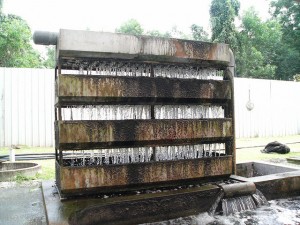
The Ultimate Guide to Finding the Best Way to Filter Your Koi Pond
Introduction
Koi ponds are an excellent way to create an outdoor oasis in your backyard. However, taking care of your koi pond requires time and effort. One of the most important maintenance tasks is keeping the water clean and clear. This is where finding the best way to filter your koi pond comes into the picture.
Why is Filtration Important for Koi Ponds?
Koi fish are known for their vibrant colors and patterns, making them a favorite for many pond owners. But keeping the water in a koi pond clear and healthy can be a challenge. Koi fish produce a lot of waste, and excess waste in the water can lead to various issues, such as poor water quality, algae growth, and even illness in your koi fish. This is where filtration comes in to play. A proper filtration system will ensure the water stays clean and clear by removing excess waste and harmful toxins.
Types of Pond Filters
There are several types of filters available on the market, each with their own pros and cons. Choosing the best filter for your koi pond depends on several factors such as the size of the pond, the number of koi fish, and your personal preferences. Here are some of the most common types of filters:
Pressurized Filters
Pressurized filters are compact and easy to install. They work by forcing water through a series of filter media, such as foam pads or bio-balls. The waste is collected in the filter media and can be easily cleaned out. Pressurized filters are great for small to medium-sized koi ponds, and they are easy to maintain.

Gravity-Fed Filters
Gravity-fed filters are larger and more expensive than pressurized filters. They work by using gravity to move water through different stages of filtration, such as mechanical, biological, and chemical. The advantage of a gravity-fed filter is that it can handle larger amounts of waste and can keep larger ponds clean and clear. However, they are more difficult to install and maintain than pressurized filters.

Bog Filters
Bog filters are becoming increasingly popular among koi pond owners. They work by using plants to filter the water. The plants consume the excess nutrients and waste from the water, resulting in clear and healthy water. Not only do bog filters provide excellent filtration, but they also add a beautiful aesthetic to your koi pond. Keep in mind that bog filters require regular maintenance and cleaning to work at their best.

Factors to Consider When Choosing the Best Pond Filter
Choosing the best filter for your koi pond can be overwhelming, but here are some factors to consider to help you make the right decision:
Pond Size
The size of your koi pond is one of the most important factors to consider when choosing a filter. A larger pond with more koi fish will require a more powerful filtration system than a smaller pond with fewer fish. Be sure to choose a filter that is appropriate for the size of your pond.
Type of Fish
The type of fish you have in your pond is another important factor to consider. Koi fish produce a lot of waste, so you need a filtration system that can handle their waste load. If you have other types of fish in your pond, such as goldfish or shubunkins, you may not need as powerful of a filtration system.
Location of the Pond
The location of your koi pond can also affect your choice of filter. If your pond is in direct sunlight, you may need a filter with UV sterilization to prevent algae growth. If your pond is in a shady area, you may not need UV sterilization but may need a filter that can handle a higher waste load.
Conclusion
Finding the best way to filter your koi pond is an essential maintenance task to ensure the health and beauty of your pond. There is no one right answer when it comes to choosing a filter, but by considering the factors mentioned above, you can make an informed decision. Remember that no matter which filter you choose, regular maintenance and cleaning are essential to keep your koi pond clean and healthy.